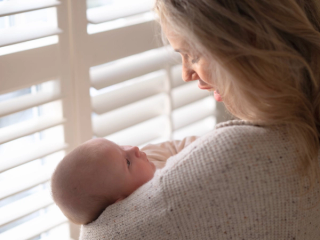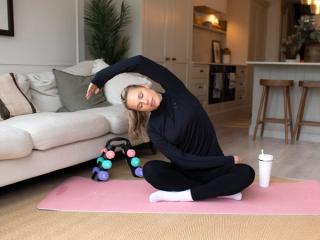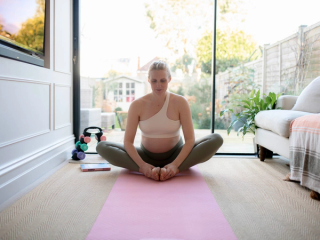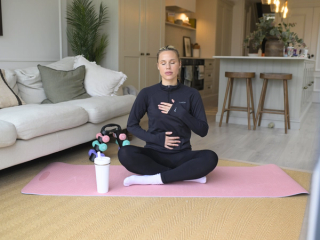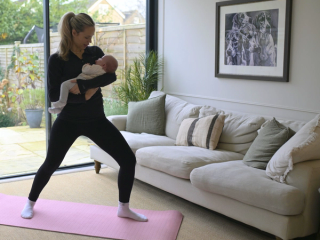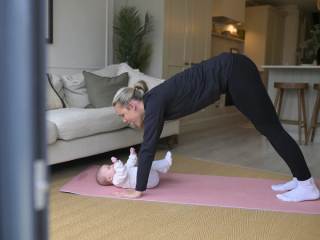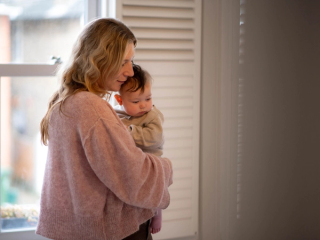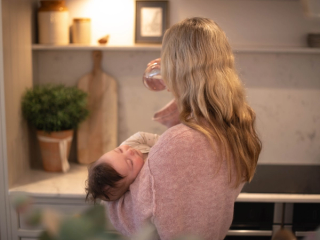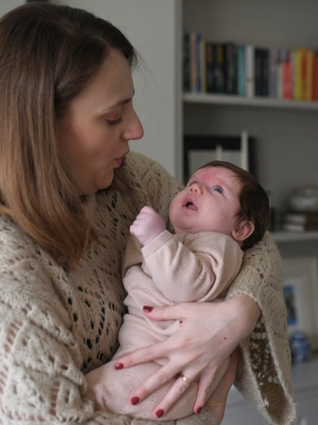
- Home
- Advice Hub
- Newborn
- Postnatal Care
- What To Expect After A C - Section
What to expect after a C-section
Whether you had planned to have a C-section or not, congratulations on your new arrival. Not only have you had major abdominal surgery, but you also have the effects of pregnancy to recover from, whilst taking care of a small human. In a word, you are incredible. So what can you expect in your recovery?
Whether you had planned the tummy exit or not, congratulations on birthing your baby. Not only have you had major abdominal surgery, but you also have the effects of pregnancy to recover from, whilst taking care of a small human. In a word, you are incredible. So what can you expect in your recovery?
The struggle of every small movement
Your abdominals have not only been stretched and weakened by pregnancy, but your body has sustained a big trauma from the surgery. The pain usually peaks by 12 – 24 hours as the spinal anaesthesia you were given for surgery completely wears off.
We use our abdominals in most movements; to reach, to get up, sit down, to lift a leg, especially to cough. So don’t be surprised if the most basic of tasks are a challenge. You should notice a big improvement in pain over the first 2 weeks that continues to get better and better.
The gas pains
Most C Section Mums are not given the heads up on the gas pains. Our intestines are sensitive things and can be unsettled by the surgery, making everything move slowly through our digestive system. On top of that we are often dehydrated from the birth, lacking fibre and haven’t been moving much. This all leads to constipation and a build-up of gas, which can be very uncomfortable.
An everchanging scar
You are going to witness the power of our body’s healing system; it truly is incredible. It is important to keep an eye on it and to pick up on any signs of infection. It is normal for the scar to be red, swollen, painful and have clear discharge at the start. This should all start settling by 2 weeks. After this point we would hope this all starts reducing with a closed wound by 6 weeks.
If you notice a foul smelling discharge, a sudden increase in pain and inflammation, or loose stitches then seek urgent medical attention – these could be signs of infection. Once the scar is fully closed and scab free there is still a lot of healing to happen. Your scar will continue to heal and remodel for up to 2 years.
What can you do to help?
- Keep on top of your pain relief. You will be up in the night anyway with the baby, so take your pain relief at regular intervals to keep a constant dose in your system.
- Drink plenty of fluids, including peppermint tea, and include plenty of fibre in your diet to get those bowels moving again and help with the gas pains. It’s recommended you drink 2 litres per day to prevent dehydration. If necessary, speak to the pharmacist about stool softeners to get things going.
- When the poo time comes use a cushion or towel to hug into your scar to support, and then take some deep breaths to relax.
- Wear loose clothing and high waisted knickers with breathable material such as cotton to avoid irritation on the scar site.
- Do your pelvic floor exercises. Pregnancy alone places a large strain on the muscles and so start working on that full lift and release as soon as possible.
- Listen to what your body is telling you. If your pain is really picking up by the end of the day you may have over done it a bit.
- Try not to compare your recovery timeline to another C Section Mum. Yes you’ve both had the same procedure to birth your baby, but there are so many factors involved that it isn’t a fair comparison.
Looking after your C Section scar (6+ weeks)
There is so much you can do to help your body’s natural healing process to get the most out of your C section scar. Although you get signed off by your GP at 8 weeks with a closed wound, this is just the start of your scar’s journey. The body continues working away to make the scar tissue as like the original tissue as possible. Here’s what you can do to help…
Desensitising - Start desensitising the scar by gently patting it dry with a towel to help to get the area used to touch again.
Scar Massage - Once you have a closed, scab-free scar use coconut oil to massage the scar itself. Coat your fingers in the oil and start with gentle sweeping and small circular motions with light pressure. Think stroking your baby’s head not a sports massage. You also want to massage into the tissue around the scar which can be done with slightly more pressure. You can head to our Instagram for a demonstration of scar massage techniques.
Silicone Strips – silicone creates the ideal healing environment for scars to make the scar flatter, softer and paler. You can buy strips containing silicone that you stick on top of your scar. Again, this shouldn’t be done until you have a closed, scab-free scar, usually around 6 weeks.
Compression – It is normal for swelling to stick around after the 6-week mark, and this can be a contributing factor to the overhang. Gentle compression can help this swelling to disperse and improves blood flow which will improve healing. It can also help with diastasis recovery. Any compressive garments should not be tight enough to restrict your breathing or make you feel restricted in movement.
Movement – Our bodies love movement even when healing. But it’s all about doing the right thing at the right time. We want to gradually introduce stretching and strengthening to the whole body again, but particularly the abdominals. You have a unique set of injuries from being pregnant followed by a C Section birth, and these injuries can be rehabbed in the same way as any other injury in the body. Getting support can really help you do this with confidence, and luckily there are specialists in this area who can give you that help. Look for your local postnatal exercise classes and see a pelvic health specialist if you can.
Advice & tips

Want to read more? Join the HiPP BabyClub for full access to this article.
As a BabyClub member, you'll get access to a range of exclusive benefits, including:
Monthly competitions
Discounts from our Partners
Expert advice tailored to your little one's age
Weaning recipes
HiPP shop discounts*
*10% off HiPP's online shop does not apply to our First Infant, Anti-Reflux or Comfort Formula Milk.
Important notice: Breastfeeding is best. Follow on milk should only be used as part of a mixed diet from 6 months. Talk to a healthcare professional.







